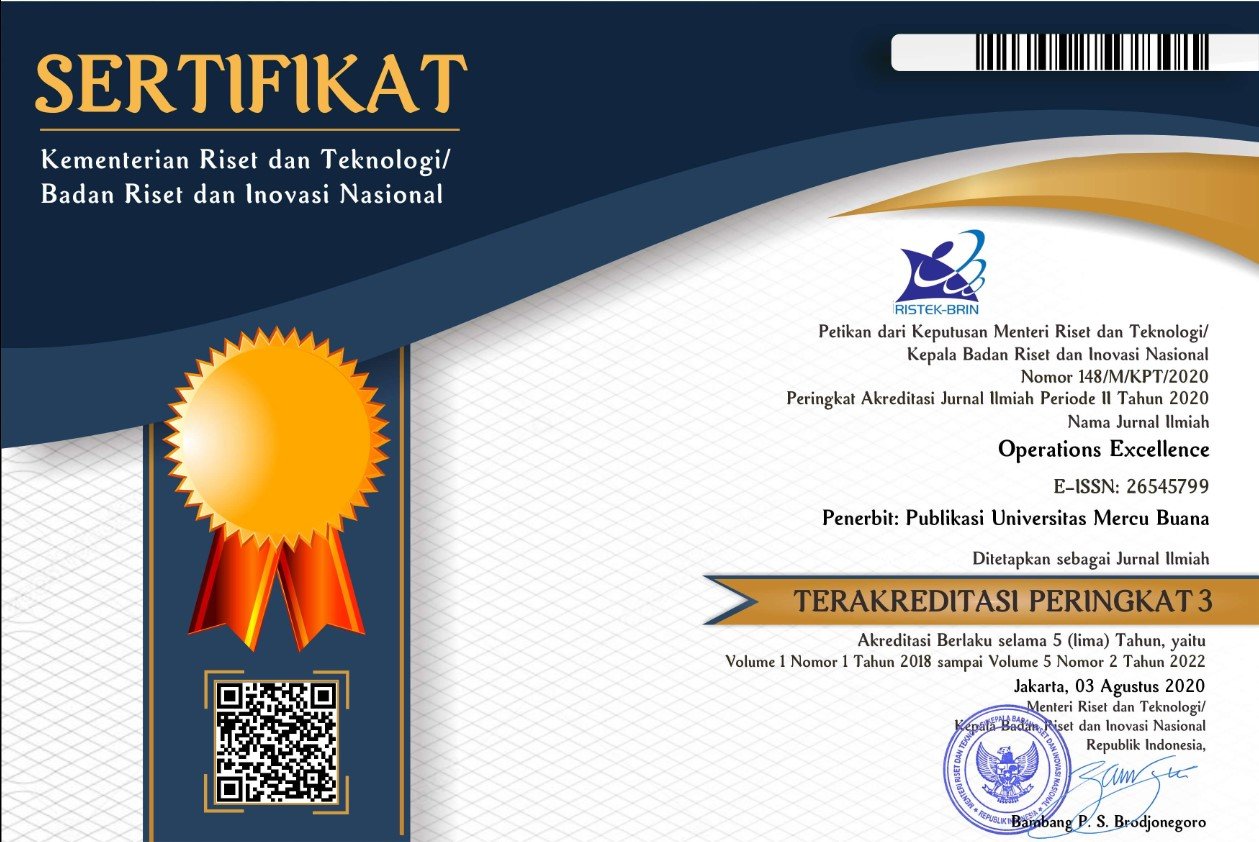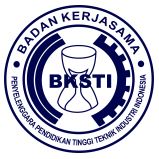Main hazard control and hazardous material handling in environment testing laboratory
Abstract
The increase in products from chemicals is currently growing rapidly in the Indonesian manufacturing industry. This correlates with a chemical test laboratory that is experiencing a flurry of activity. The placement of chemicals in testing laboratories still does not have problem-solving that can make it easier to search for other potential dangers. So far, the placement of chemicals is not based on hazard, but only on phase differences, namely solid and liquid phases, as well as materials that are frequently and rarely used can pose a hazard. This study aims to provide knowledge about main hazard control to all employees and propose material hazard handling in environmental laboratory testing following the material MSDS. This research method uses the concept of re-layout chemicals in the laboratory based on the type of danger they cause by collecting data obtained from MSDS, literature review studies, references from books, government regulations, and the Merck China website to see the characteristics of chemicals that will be placed in the material stock storage room. This study found a layout mapping of chemicals in the materials storage room, with 3 storage areas and 2 additional storage areas. The result of this research is that Cabinet A is filled with harmless solid phase materials and a class of toxic substances. The chemicals in cabinet B, consist of solid-phase materials that are corrosive, harmless, irritating, carcinogenic, and highly flammable. Whereas on shelf C letter L it consists of liquid phase materials which are harmless, corrosive, dangerous, flammable, highly flammable, highly flammable, carcinogenic or toxic. Whereas Container D contains chemicals that have oxidizing properties and Cabinet E contains chemicals that are highly flammable in water.
Keywords
Full Text:
PDFReferences
Aprilia, S., Kurnia, H., Setyawan, Welly Teguh Ashar, E., & Wahyudi, A. (2023). Safety and Health (K3) Review of Employee Work Activities in Various Companies in a Systematic Study. Industry Xplore, 8(2), 203–211. https://doi.org/10.36805/teknikindustri.v8i1.5102
Beatrix, M. E., & Triana, N. E. (2019). Improvement Bonding Quality of Shoe Using Quality Control Circle. Sinergi, 23(2), 123. https://doi.org/10.22441/sinergi.2019.2.005
Bernabeu-Martínez, M. A., Merino, M. R., Santos Gago, J. M., Alvarez Sabucedo, L. M., Wanden-Berghe, C., & Sanz-Valero, J. (2018). Guidelines for safe handling of hazardous drugs: A systematic review. PLoS ONE, 13(5), 1–24. https://doi.org/10.1371/journal.pone.0197172
Bhuiyan, M. A. R., Wang, L., Shaid, A., Shanks, R. A., & Ding, J. (2019). Advances and applications of chemical protective clothing system. Journal of Industrial Textiles, 49(1), 97–138. https://doi.org/10.1177/1528083718779426
Dallinger, D., Gutmann, B., & Kappe, C. O. (2020). The Concept of Chemical Generators: On-Site On-Demand Production of Hazardous Reagents in Continuous Flow. Accounts of Chemical Research, 53(7), 1330–1341. https://doi.org/10.1021/acs.accounts.0c00199
Digiesi, S., Facchini, F., Mossa, G., & Mummolo, G. (2018). Minimizing and balancing ergonomic risk of workers of an assembly line by job rotation: A MINLP Model. International Journal of Industrial Engineering and Management, 9(3), 129–138. https://doi.org/10.24867/IJIEM-2018-3-129
Geueke, B., Groh, K., & Muncke, J. (2018). Food packaging in the circular economy: Overview of chemical safety aspects for commonly used materials. Journal of Cleaner Production, 193, 491–505. https://doi.org/10.1016/j.jclepro.2018.05.005
Karthikeyan, L., Suresh, V. M., Krishnan, V., Tudor, T., & Varshini, V. (2018). The management of hazardous solid waste in India: An overview. Environments - MDPI, 5(9), 1–10. https://doi.org/10.3390/environments5090103
Kelly, K. E., Whitaker, J., Petty, A., Widmer, C., Dybwad, A., Sleeth, D., Martin, R., & Butterfield, A. (2017). Ambient and laboratory evaluation of a low-cost particulate matter sensor. Environmental Pollution, 221, 491–500. https://doi.org/10.1016/j.envpol.2016.12.039
Kong, Y., Xie, C., Zheng, S., Jiang, P., Guan, M., & Wang, F. (2019). Dynamic early warning method for major hazard installation systems in the chemical industrial park. Complexity, 2019. https://doi.org/10.1155/2019/6250483
Manurung, H., Fahri, A., Purba, H. H., & Kurnia, H. (2021). Accidence Analysis Work with Failure Mode and Effect Analysis Method in the Coating Service Industry in Indonesia. Specktrum Industry Journal, 19(2), 135–144. https://doi.org/10.12928/si.v19i2.20585
Oktavilia, S., Hapsari, M., Firmansyah, Setyadharma, A., & Fajarini Sri Wahyuningsum, I. (2020). Plastic Industry and World Environmental Problems. E3S Web of Conferences, 202, 1–8. https://doi.org/10.1051/e3sconf/202020205020
Pranoto, H., Adriansyah, A., Feriyanto, D., Wahab, A., & Zakaria, S. (2020). Propose Safety Engineering Concept Speed Limiter and Fatigue Control Using Slifa for Truck and Bus. Sinergi, 24(3), 237. https://doi.org/10.22441/sinergi.2020.3.009
Rembulan, G. D., & Maratama, S. (2022). PDesign of Assistive Devices Using the Conjoint Analysis Method and Quality Function Deployment (Qfd) Based on Ergonomics Principles. JIEMS (Journal of Industrial Engineering and Management Systems), 15(1), 35–44. https://doi.org/10.30813/jiems.v15i1.3602
Tarnada, B., Zio, S., Nikimea, F., Tapsoda, F., Karama, J. P. B., Savadogo, A., & Yaguibou, A. G. (2021). Biological, chemical, and physical hazard control plans to ensure employees' health during dried mango production. Journal of Life Science and Biomedicine, 11(6), 94–106. https://doi.org/10.51145/jlsb.2021.12
Williams, A. J., Grulke, C. M., Edwards, J., McEachran, A. D., Mansouri, K., Baker, N. C., Patlewicz, G., Shah, I., Wambaugh, J. F., Judson, R. S., & Richard, A. M. (2017). The CompTox Chemistry Dashboard: A community data resource for environmental chemistry. Journal of Cheminformatics, 9(1), 1–27. https://doi.org/10.1186/s13321-017-0247-6
YörükoĞlu, K., Özer, E., Alptekin, B., & Öcal, C. (2017). Improving histopathology laboratory productivity: Process consultancy and A3 problem-solving. Turk Patoloji Dergisi, 33(1), 47–57. https://doi.org/10.5146/tjpath.2016.01375
Zhou, L., Fu, G., & Xue, Y. (2018). Human and organizational factors in Chinese hazardous chemical accidents: a case study of the ‘8.12’ Tianjin Port fire and explosion using the HFACS-HC. International Journal of Occupational Safety and Ergonomics, 24(3), 329–340. https://doi.org/10.1080/10803548.2017.1372943
Zhu, L., Liang, Z., Yi, T., Ma, Y., Zhao, Z., Guo, B., Zhang, J., & Chen, H. (2017). Comparison of chemical profiles between the root and aerial parts from three Bupleurum species based on a UHPLC-QTOF-MS metabolomics approach. BMC Complementary and Alternative Medicine, 16(2), 1–12. https://doi.org/10.1186/s12906-017-1816-y
DOI: http://dx.doi.org/10.22441/oe.2023.v15.i2.083
Refbacks
- There are currently no refbacks.
Copyright (c) 2023 Operations Excellence: Journal of Applied Industrial Engineering

This work is licensed under a Creative Commons Attribution-ShareAlike 4.0 International License.
Journal ISSN:
| Print ISSN: 2085-4293 | |
| Online ISSN: 2654-5799 |
Tim Editorial Office
Operations Excellence: Journal of Applied Industrial Engineering
Magister Teknik Industri Universitas Mercu Buana
Jl. Raya Meruya Selatan No. 1 Kembangan Jakarta Barat
Email: [[email protected]]
Website: http://publikasi.mercubuana.ac.id/index.php/oe
Journal DOI: 10.22441/oe
The Journal is Indexed and Journal List Title by:

.png)
.png)
.png)


Operations Excellence: Journal of Applied Industrial Engineering is licensed under a Creative Commons Attribution-NonCommercial-ShareAlike 4.0 International License.











